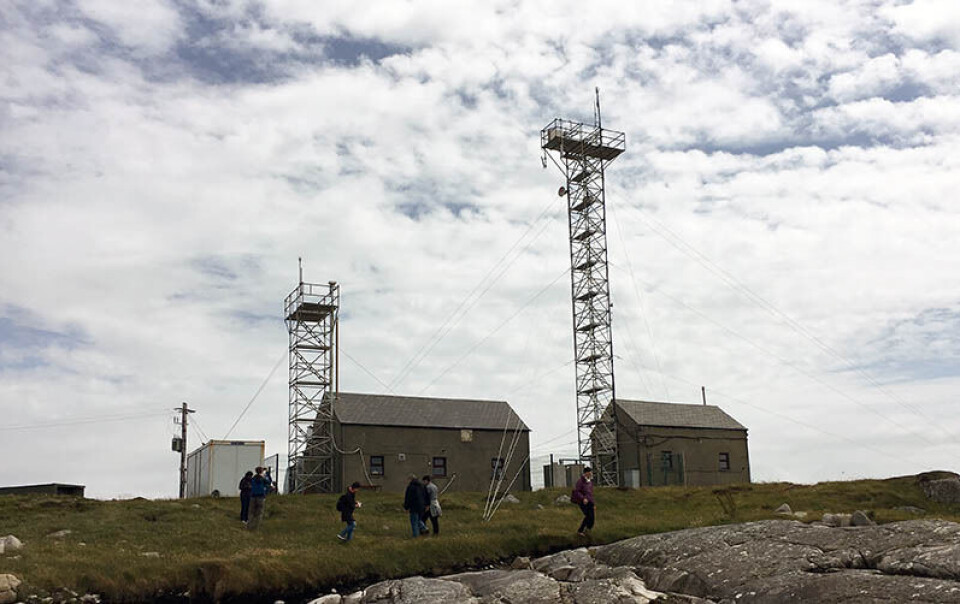THIS ARTICLE/PRESS RELEASE IS PAID FOR AND PRESENTED BY NILU - Norwegian Institute for Air Research - read more

Studies show that marine air, snow, sea spray and fog contain or convey atmospheric microplastics
The atmosphere is an important component of the plastic cycle and needs to be included when forming strategies to manage plastic pollution.
The marine environment extends over 70 per cent of our planet. It forms a significant surface where atmospheric micro- and nanoplastic (MnP) are exchanged between the air and water environments.
Research on the marine plastic cycle has primarily focused on terrestrial discharges of plastic to the sea, without considering atmospheric influence. It has become clear today that the atmosphere is an important component of the plastic cycle, a potentially significant source of smaller plastic particles that are transported to and from the oceans.

Microplastics travel 1000s of kilometres
Atmospheric MnPs are small in size, predominantly below 500 microns. A large proportion of the particles are at or below 10µm, the respirable particle size. These particles fall within the particle size of greatest concern for biotic, ecosystem and human health. Thus, quantifying how much of these small MnPs the atmosphere provides to the ocean and the ocean-atmosphere exchange is important to global health.
The recent Nature Reviews Earth and Environment paper “Plastic Pollution in the Arctic” highlights the extent of the plastic pollution problem, illustrating its pervasiveness even into the remote Arctic environments.
In the last few years, studies have shown marine air containing atmospheric microplastics, Arctic snow composed by atmospheric microplastics, and sea spray and fog conveying atmospheric microplastics. Notable concentrations of atmospheric microplastic and nanoplastic have been quantified, from 0.06-1.37 MnP m-3 in offshore marine air to 5,700 m-3 in dense city environments, and modelled to travel by air 100s to 1000s of kilometres – across countries, continents and oceans.
Estimating the ocean-atmosphere exchange
This new perspectives article brings together 33 international expert scientists in atmospheric, oceanography and plastic pollution, supported by the UN GESAMP and the WMO, to highlight the importance of the atmosphere in the total plastic cycle, as air transports small plastic particles to great distances potentially to and from the marine environment.
The global ocean presents a significant expanse where atmospheric MnPs may deposit. Conversely, bubble burst ejection of MnPs, an exchange mechanism similar to sea salt aerosol marine-atmosphere exchange, suggests the sea to be a potential source of atmospheric MnP. The ocean-atmosphere exchange or flux is estimated in this new perspective paper (0.013–25 million metric tons per year), but these values are highly uncertain due to the limited availability of consistent, comparable data.
Strategy to help manage plastic pollution
To combat this uncertainty and to advance global ocean-atmosphere MnP fluxes, the scientists behind the paper outline a global observation and research strategy. This strategy will provide not only a long-term observation network of atmospheric MnP, but also help quantify the ocean-atmosphere MnP fluxes. The perspective paper highlights the current ‘unknowns’ in atmospheric MnP science, such as offshore marine deposition or source specific MnP emission rates, and presents solutions to address these knowledge and data gaps moving forward.
The global strategy described in the paper aims to help create a cohesive, comparable dataset that will enable us to monitor atmospheric MnP fluxes in a similar manner to mercury, aerosol particles or CO2. It will enable not only quantification of ocean-atmosphere MnP fluxes and therefore the influence of ecosystem and human health, but also more effective prevention and/or management of plastic pollution.
The perspectives paper highlights the need to act now to initiate a global MnP observation network, operation procedures and globally comparable long-term observation datasets.
Reference:
Allen et al. 'Microplastics and nanoplastics in the marine-atmosphere environment'. Nature Reviews Earth & Environment, 2022. https://doi.org/10.1038/s43017-022-00292-x Abstract.

-
See more content from NILU:
-
Summer in Central Europe: Drought and wildfires to be expected
-
How do you design a healthier place to live?“I would prioritise easy, car-free access to everything you need in your daily life"
-
Fires in tropical forests affect more than just the forests
-
Engineer Sam Celentano found 222 grams of gold in a laboratory. What was it doing there?
-
Air pollution levels are still too high across Europe
-
Researchers have discovered how biological particles affect the clouds over the Arctic





































